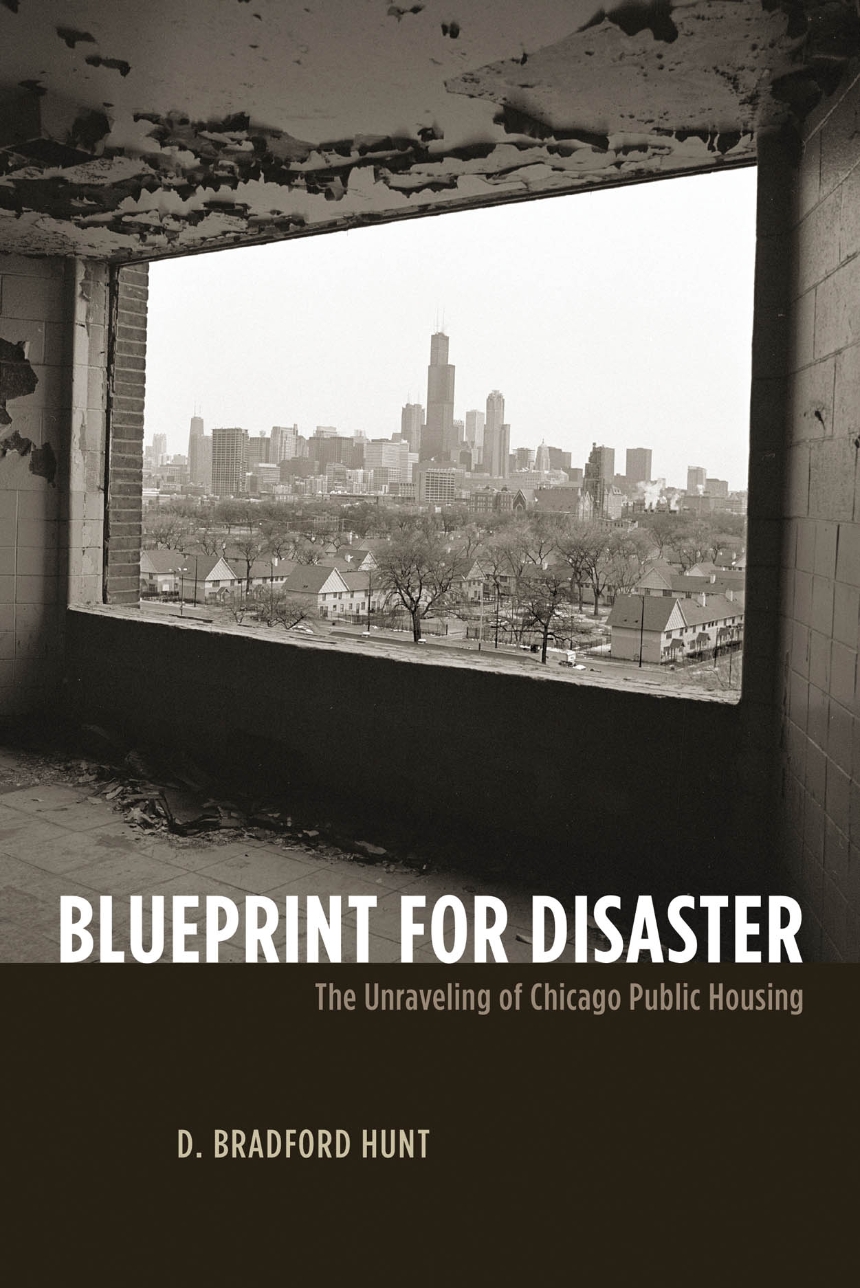Blueprint for Disaster
The Unraveling of Chicago Public Housing
Now considered a dysfunctional mess, Chicago’s public housing projects once had long waiting lists of would-be residents hoping to leave the slums behind. So what went wrong? To answer this complicated question, D. Bradford Hunt traces public housing’s history in Chicago from its New Deal roots through current mayor Richard M. Daley’s Plan for Transformation. In the process, he chronicles the Chicago Housing Authority’s own transformation from the city’s most progressive government agency to its largest slumlord.
Challenging explanations that attribute the projects’ decline primarily to racial discrimination and real estate interests, Hunt argues that well-intentioned but misguided policy decisions—ranging from design choices to maintenance contracts—also paved the road to failure. Moreover, administrators who fully understood the potential drawbacks did not try to halt such deeply flawed projects as Cabrini-Green and the Robert Taylor Homes. These massive high-rise complexes housed unprecedented numbers of children but relatively few adults, engendering disorder that pushed out the working class and, consequently, the rents needed to maintain the buildings. The resulting combination of fiscal crisis, managerial incompetence, and social unrest plunged the CHA into a quagmire from which it is still struggling to emerge.
Blueprint for Disaster, then,is an urgent reminder of the havoc poorly conceived policy can wreak on our most vulnerable citizens.
392 pages | 28 halftones, 4 line drawings, 1 table | 6 x 9 | © 2009
Historical Studies of Urban America
Geography: Urban Geography
History: Urban History
Political Science: Urban Politics
Sociology: Urban and Rural Sociology
Reviews
Table of Contents
List of Illustrations
Introduction What Went Wrong with Public Housing in Chicago?
Chapter 1 The 1937 Housing Act Revisited
Chapter 2 Building the Chicago Housing Authority
Chapter 3 Clearing Chicago’s Slums
Chapter 4 The End of Integration and the Taming of the CHA
Chapter 5 Designing High-Rise Disasters
Chapter 6 Planning a Social Disaster
Chapter 7 The Loss of the Working Class
Chapter 8 The Tenants Revolt
Chapter 9 The Gautreaux Case and the Limits of Judicial Activism
Chapter 10 The Long Road to Rebirth
Conclusion The Unraveling of Public Housing in Chicago
Acknowledgments
A Note on Sources
Notes
IndexAwards
Urban History Association: Kenneth Jackson Award
Honorable Mention
Society for American City & Regional Planning History: Lewis Mumford Prize
Won
